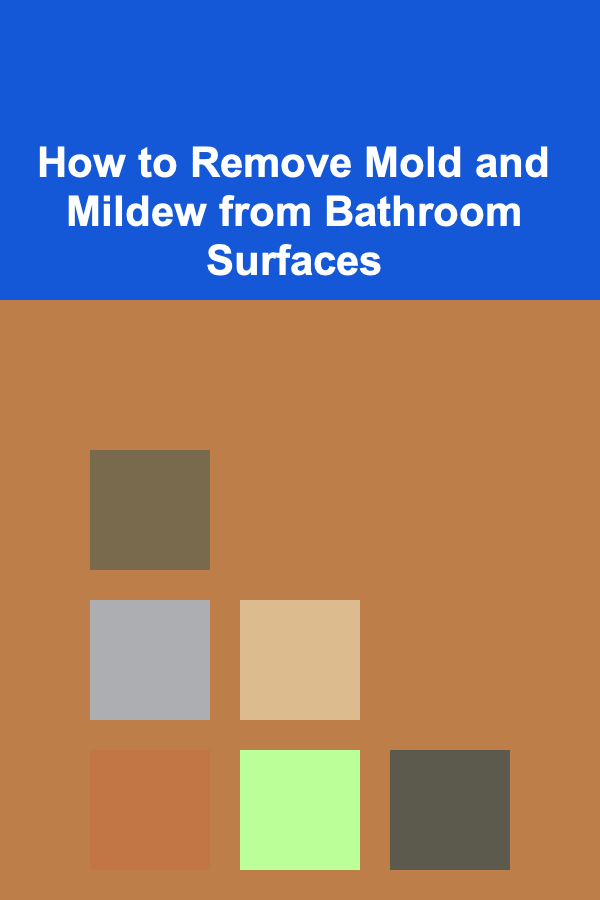
How To Draw Fantastical Creatures and Mythical Beasts
ebook include PDF & Audio bundle (Micro Guide)
$12.99$11.99
Limited Time Offer! Order within the next:

Drawing fantastical creatures and mythical beasts is a journey that combines imagination, artistic skill, and an understanding of anatomy, mythology, and symbolism. Whether you're working on a personal project, a professional piece, or just for fun, the process of designing and illustrating these mythical beings can be an exhilarating and rewarding experience. This article delves into the process of how to draw these creatures, offering practical steps and artistic advice that can guide you through the creative process.
The Foundations of Drawing Fantastical Creatures
Before embarking on the detailed creation of a mythical beast, it's essential to first understand the basic principles of drawing. These fundamentals will serve as the foundation for all of your creative endeavors, ensuring that your creatures are not only fantastical but also anatomically feasible (within the confines of their fantastical nature, of course).
1. Understanding Basic Anatomy
While mythical creatures are often free from the constraints of reality, their design should still reflect a certain internal logic. This means applying basic principles of anatomy even to fantastical beasts. For example, if you're drawing a creature with four legs, it can be useful to base the structure of the limbs on the anatomy of real animals like horses, dogs, or lions. Their joints, muscles, and bone structure can inform how the creature will stand, move, and interact with the environment.
2. Silhouettes and Shapes
A successful mythical creature begins with its silhouette. This is the first impression your audience will get of the creature, and it is crucial to create a distinctive and memorable shape. When designing a creature, consider its overall form and how it contrasts with other creatures in the same world. Is it large and imposing, like a dragon or a griffin? Or is it small and elusive, like a pixie or a forest sprite? The shapes you use for your creature's outline will greatly influence its impact.
3. Study Real-World Animals and Mythology
Though you're creating a fantastical beast, studying real animals and existing mythology can give you a wealth of material to work with. Many mythical creatures are based on real-world animals or are combinations of them. Dragons, for example, often combine the traits of reptiles, birds, and mammals. The griffin, on the other hand, mixes the body of a lion with the wings and head of an eagle.
Mythological creatures also carry symbolic significance. A creature's appearance and characteristics often represent certain traits or powers---such as the strength and nobility of a lion (which is why lions often appear in mythology as symbols of kingship and bravery). Drawing from these symbolic elements can give depth to your designs.
Creating the Concept: Designing a Mythical Creature
Designing a mythical creature involves blending creativity with structure. This is the phase where you let your imagination run wild, mixing different animals, features, and even elements of nature to create something entirely unique.
1. Choose the Creature's Traits
Decide on the essential characteristics of the creature you're creating. Some questions to ask yourself include:
- Is it humanoid or animalistic? Does it have a body similar to a human, or is it more of a beast?
- What is its primary function or role? Is it a protector, a messenger, a destroyer, or a guardian of some magical realm?
- What are its powers or abilities? Can it breathe fire like a dragon, manipulate shadows, or communicate with the elements? These abilities should align with its overall design.
- What is its environment? Creatures living in the sky, like griffins, will need wings and aerial characteristics, while those in the sea, like mermaids, will have aquatic features.
2. Combining Features and Inspiration
The key to creating a mythical creature is combining different aspects of animals, humans, or even inanimate objects into one unique form. Perhaps you want a creature with the body of a horse but the head of a lion, or a bird with the tail of a serpent. Combining such disparate features can yield a creature that is entirely new while still feeling familiar.
You can also incorporate cultural and mythological elements from various traditions. The dragon is a prime example. In Western mythology, dragons are often large, winged reptiles with an affinity for treasure, while in Eastern cultures, dragons are usually serpentine, benevolent creatures that represent power and wisdom. The way you merge these aspects can influence the creature's nature.
3. Establish Personality and Purpose
A mythical creature's design should also reflect its personality. For instance, a creature that's a protector or guide (such as a unicorn) might have a sleek, elegant, and graceful design, whereas a destructive beast (like a hydra) might appear more menacing with jagged scales or multiple heads.
The personality and purpose of the creature should inform not just its anatomy but also its facial expressions and posture. A majestic creature may stand tall with a serene expression, while a fierce one may have aggressive, predatory features such as bared teeth or narrowed eyes.
Drawing the Creature: Step-by-Step Guide
Once you've defined the concept of your mythical creature, it's time to bring it to life through drawing. Below is a step-by-step guide to help you through the process of sketching your fantastical beast.
1. Begin with Basic Shapes
Start by drawing simple shapes to represent the creature's basic structure. These shapes act as placeholders for the body, head, legs, and tail. Circles and ovals are excellent for the head and body, while straight or curved lines can be used for limbs, wings, or tails.
2. Refine the Silhouette
Once you have the basic structure down, focus on refining the silhouette. Begin fleshing out the body, making adjustments to the proportions and outline to match your creature's design. For example, if it has wings, draw them in relation to the body, ensuring they fit the creature's size and shape.
3. Add Details and Features
Start adding finer details, like the creature's skin texture, scales, feathers, fur, or horns. Focus on the defining characteristics that make your creature unique. A dragon, for example, might have spiny scales and clawed feet, while a phoenix may have elegant, flowing feathers.
Pay attention to the creature's face. The eyes, mouth, and nose are crucial for conveying its personality. Consider whether the creature has animalistic features (like sharp teeth or a beak) or more humanoid ones (like expressive eyes or a smile).
4. Work on the Creature's Limbs
The limbs play a significant role in the movement and stance of the creature. Whether it's walking, flying, or swimming, the position and structure of the limbs should reflect the creature's abilities. For example, a creature that flies should have wings with clear articulation, while a ground-dwelling beast may have muscular, sturdy legs.
5. Add Details to the Environment
Consider how the creature fits into its environment. If it's a forest-dwelling creature, you might want to add trees, rocks, or flowers around it. A creature that lives in the mountains might have rugged terrain in the background. This not only situates the creature in its world but also adds depth and context to your drawing.
6. Finalize the Drawing
Once the main elements are in place, go over the drawing with more precise lines. Clean up any rough edges and ensure that all elements are proportionate and balanced. Add shading and texture to give the creature depth and dimension. The shading should reflect the light source in the scene and help emphasize key features, like muscular structure or the texture of the creature's skin.
7. Add Color (Optional)
If you want to bring your creature to life even further, consider adding color. Whether you use digital painting, colored pencils, or watercolors, the choice of color can dramatically affect the mood of your creature. Warm colors like reds and oranges can make a creature appear more dangerous or powerful, while cooler tones like blues and purples may give it a more mystical or serene appearance.
Tips for Drawing Realistic Mythical Creatures
Even though these creatures are fantastical, the more realistic and believable your drawing is, the more captivating it will be. Here are some tips to make your mythical creatures look grounded, even in the most otherworldly contexts.
- Focus on texture: Whether your creature has feathers, fur, scales, or skin, the texture is essential. Use different shading techniques to capture the material the creature is made of.
- Ensure proportion and balance: Even the most mythical creatures should feel grounded in terms of proportion. If your creature has large wings, make sure the body can support them. If it has multiple heads, the necks and heads should be balanced correctly.
- Incorporate natural movement: Whether a creature flies, swims, or walks, the posture and positioning should feel natural. Look at references of real animals to understand how movement and body weight affect posture.
Conclusion
Drawing fantastical creatures and mythical beasts is an exciting challenge that allows artists to blend imagination with technical skill. By mastering the basics of anatomy, combining different animal features, and understanding the mythology behind the creatures, you can create beings that are as believable as they are mythical. Every detail you add---from the creature's design to its personality and environment---contributes to making it more captivating and unique. So, pick up your pencil, let your imagination run wild, and start creating your very own mythical masterpiece.
Reading More From Our Other Websites
- [Home Family Activity 101] How to Create a Family DIY Project
- [Organization Tip 101] How to Use a Corkboard for Important Reminders and Supplies
- [Organization Tip 101] How to Achieve a Perfect Floor with Self-Leveling Underlayment
- [Personal Finance Management 101] How to Avoid Lifestyle Inflation as You Earn More
- [Soap Making Tip 101] The Science Behind Soap Curing: Why Time Makes All the Difference
- [Personal Financial Planning 101] How to Save for a Down Payment on a Home Without Stress
- [Organization Tip 101] How to Organize Your Kids' Toys for Stress-Free Playtime
- [Home Party Planning 101] How to Plan a Scavenger Hunt for Your Home Party Guests
- [Home Space Saving 101] How to Declutter Your Kitchen and Free Up Counter Space
- [Gardening 101] Eco‑Friendly Gardening Hacks: Why Drip Irrigation Is the Green Choice for Home Growers

How to Make Money Online as a Social Media Influencer: 10 Actionable Ideas
Read More
How to Remove Mold and Mildew from Bathroom Surfaces
Read More
How to Set Up a Home Movie Theater Experience for Family Movie Night
Read More
How to Start Saving Money on Prescription Medications Without Sacrificing Quality
Read More
How to Use Deep Learning to Automate Your Way to Passive Income
Read More
10 Tips for Batch Cooking and Freezing with Your Meal Plan & Grocery List
Read MoreOther Products

How to Make Money Online as a Social Media Influencer: 10 Actionable Ideas
Read More
How to Remove Mold and Mildew from Bathroom Surfaces
Read More
How to Set Up a Home Movie Theater Experience for Family Movie Night
Read More
How to Start Saving Money on Prescription Medications Without Sacrificing Quality
Read More
How to Use Deep Learning to Automate Your Way to Passive Income
Read More